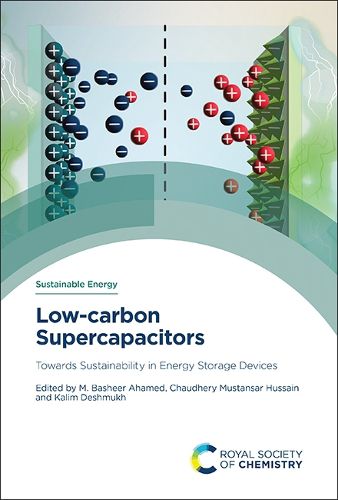Readings Newsletter
Become a Readings Member to make your shopping experience even easier.
Sign in or sign up for free!
You’re not far away from qualifying for FREE standard shipping within Australia
You’ve qualified for FREE standard shipping within Australia
The cart is loading…






Supercapacitors can both hold large amounts of energy and charge up almost instantly. They have higher energy densities, higher efficiencies and longer lifetimes so can be used in a wide range of energy harvesting and storage systems including portable power and grid applications.
Despite offering key performance advantages, many device components pose significant environmental hazards, often containing fluorine, sulfur and cyanide groups which are harmful when discarded. In recent years, there has been increasing research into more sustainable electrode materials for supercapacitor applications.
In this book, readers are introduced to the extensive and ongoing research on the rationalization of low-carbon supercapacitor materials, their structures at varying scales and dimensions, the development of effective and low-cost synthesis techniques, design and architecture of green materials, as well as clarification of their electrochemical performance.
It is an ideal book for researchers and industry professionals at the energy-environment nexus, searching for new advancements in supercapacitor science and technologies.
$9.00 standard shipping within Australia
FREE standard shipping within Australia for orders over $100.00
Express & International shipping calculated at checkout
Supercapacitors can both hold large amounts of energy and charge up almost instantly. They have higher energy densities, higher efficiencies and longer lifetimes so can be used in a wide range of energy harvesting and storage systems including portable power and grid applications.
Despite offering key performance advantages, many device components pose significant environmental hazards, often containing fluorine, sulfur and cyanide groups which are harmful when discarded. In recent years, there has been increasing research into more sustainable electrode materials for supercapacitor applications.
In this book, readers are introduced to the extensive and ongoing research on the rationalization of low-carbon supercapacitor materials, their structures at varying scales and dimensions, the development of effective and low-cost synthesis techniques, design and architecture of green materials, as well as clarification of their electrochemical performance.
It is an ideal book for researchers and industry professionals at the energy-environment nexus, searching for new advancements in supercapacitor science and technologies.